Exploring the Fascinating Coins of the Khilji Dynasty
The Khilji Dynasty was a notable dynasty in Indian history, ruling from the late 13th to early 14th centuries. One of the most interesting aspects of their rule was their coinage. Khilji coins offer a glimpse into the culture, economy, and politics of the time. Let’s break down the significance of these coins and what makes them special.
The Historical Context of Khilji Coins
During the Khilji Dynasty, India underwent significant changes. The rulers focused on expanding their territories and consolidating power. This expansion required a robust economic system, and coins played a crucial role. The Khilji rulers minted coins to facilitate trade, collect taxes, and promote their authority. Each coin tells a story of the era it comes from, reflecting the values and priorities of the Khilji rulers.
Types of Khilji Coins
Khilji Dynasty coins primarily fall into two categories: gold and silver. Gold coins were often used for high-value transactions, while silver coins were more common for daily trade.
Gold Coins
Gold coins, known as mohurs, were symbols of wealth and power. These coins usually featured intricate designs, often portraying the ruler's name and title. They weren't just money; they were statements of authority. Imagine holding a piece of history that was once used by powerful kings!
Silver Coins
On the other hand, silver coins, called tanka, were used in everyday transactions. The design was simpler but still featured important inscriptions. The tanka was crucial for common people, making it easier for them to engage in commerce. It’s fascinating to think that a simple silver coin was part of daily life back then!
The Artistic Designs
What stands out about Khilji coins is their artistic flair. The designs were often intricate, showcasing beautiful calligraphy and motifs. Each coin served not just a practical purpose but also an artistic one. They were like tiny canvases displaying the craftsmanship of that era. You can almost feel the pride the artisans had in their work.
Inscriptions: Storytellers of the Past
The inscriptions on Khilji coins are pointers to their significance. Many coins carried the names and titles of the rulers, sometimes accompanied by religious phrases or symbols. This was a way to legitimize their rule and create a connection with their subjects. Think about how powerful it must have felt for a ruler to have their name minted on coins circulating among the people!
Economic Significance
Khilji coins weren't just pretty; they were essential for the economy. By issuing a uniform currency, they made trade easier across their empire. This helped in collecting taxes more efficiently. When everyone used the same currency, it simplified transactions like using your favorite app for payments today.
Collecting Khilji Coins Today
Today, collecting Khilji coins has become a passion for historians and numismatists alike. Each coin is a treasure, linking modern collectors to the past. Finding a Khilji coin gives you a direct connection to a time when empires rose and fell, and a story that's just waiting to be told.
Conclusion
Khilji Dynasty coins provide invaluable insights into the socio-economic fabric of 13th and 14th century India. They serve as a reminder of how currency can shape society and reflect the values of its time. Whether you’re a history buff or a casual collector, these coins offer a tangible connection to an exciting era. It’s not just about money; it’s about understanding a bygone world.
Old Khiljis Dynasty Coins for Sale
In 1290AD the kingdom of Delhi passed to another dynasty, the Khiljis, who ruled between 1290 and 1320 AD. There were five kings in this dynasty. The first two rulers, Jalaluddin Firoz (1290-1296AD) and Rukhnuddin Ibrahim (1296AD) followed Balban's coinage in almost all respects. The third ruler, Alauddin Muhammad Shah (1296-1316AD), enriched his treasury through conquests in South India and issued a large number of coins. He and his successor, Qutbuddin Mubarak Shah, issued not only gold and silver thanga, but also coins of heavier weight. Alauddin issued 5, 10, 50 and 100 tola gold coins. His son Qutbuddin Mubarak Shah issued not only the gold and silver tanka but also heavier coins. Alauddin issued gold coins in denominations of 5, 10, 50 and 100 tolas. His son Qutbuddin Mubarak issued a huge coinage in both gold and silver in no less than fourteen denominations in round and square shapes in two denominations: 5, 10, 20, 30, 40, 50, 60, 70, 80, 90, 100, 150 and 200. Dolas. But no specimens of these coins have been found so far. Only Thakur Beru, mint master of Delhi, mentions them in his accounts of the work of the mint under his charge during the reign of these rulers. This is not a myth. Such coins bear the names of Sultans of Malwa and Mughal emperors. Scholars consider these gigantic issues to be massive ingots of artistically stamped bullion, hoarded as valuable anecdotes and occasionally given to ambassadors, diplomatic agents, and other dignitaries as compliments or souvenirs of imperial patronage. They do not believe they were high value coins. But there is no reason to disbelieve Thakur Pheru when he mentions these pieces as gold and silver coins.
Alauddin Khilji changed the form of the inscriptions by dropping the caliph's name from the obverse of his gold and silver coins and replacing the title with the self-respecting Sikandar-us-Zhani Yamin-ul-Khilafat (Right Hand of Alexander II). Khilafat). Qutbuddin Mubarak used the arrogant title of al-Imam al-Azam Khalifa Rab al-Almin (Supreme Leader of Islam, Caliph, Lord of the Heavens and Earth). The gold and silver coins issued by the Sultans of Delhi, including Muhammad Bin Sam, are identical in their content, i.e., instruction, design, fabric and weight. They weighed 170 grains, which was then the weight of a tola.
Feroze Khilji and Alauddin Khilji retained the bilingual reverse coinage introduced by Balban in their billon coins. At the same time, the latter introduced another type where his name and titles are emblazoned on both sides of the coins. This was followed by his successors. Qutbuddin Mubarak added some more varieties. All the billion coins were known by the name kani or gani and were of various denominations eg ekwani (one), daugani 9two), chaukani (four), sakani (six), adhakani (eight), barakani (twelve), chaupsakani (twenty four) and Ardalis-Gani (forty-eight). Above them was a silver tankard worth sixty khans. So kani is the unit currency and was known as jital in pre-Khilji period and dam in Khilji and later periods. These kani coins, regardless of value up to eight kani, have a uniform weight of 56.7 grains, the difference in value depending on the proportions in which the two metals are mixed, silver and copper. According to information given by Thakur, an egg contained 95 per cent copper and 5 per cent silver; Dukhani contained 9.75 percent silver; A chaukani contained 16.4 percent white metal; Similarly, the percentage of silver in other currencies increased. The other three great denominations had more weight in proportion to their value, as determined by the weight of the Athakani coins; Silver was in the same proportion. So these coins are a strange phenomenon in the history of numismatics. They don't carry their value on them; similarly, it would not have been easy for a layman to distinguish visually between coins of different denominations of the same weight, and it was by no means certain whether the different types of these coins represented different denominations.
The copper coins of these early Sultans of Delhi were of lesser value than the billion gem. They are Visva (one-twentieth of Kani), Sava-Visva (one-tenth of Kani), Athava (one-eighth of Kani) and Bhaika (five Visvas or one-fourth of Kani). According to Thakur Peru, they weighed 14.2, 19.7, 35.8 and 71.6 grains respectively.
Some of the coins of these early sultans bear the names of the places where they were struck. Iltumish's coins bear the name of Delhi, which was the capital. The name Naveen Kaur, which was the seat of the governors of Bengal, is found on the coins of Lakhnauti Rus. Balban's coins include the names of the cities Sultanpur and Fakhrabad. Alauddin Khilji issued coins from Deoghir, when he led his invasion there and occupied it. After the victory of Ranthambore he issued coins under the name of Darul-Islam, which he issued. His successor Qutbuddin Mibarak renamed Deoghir as Qutbabad after himself and issued coins under this new name. Some other places of less importance are also mentioned in some coins. Often, these coins were issued during military campaigns.
Mubarak Shah |
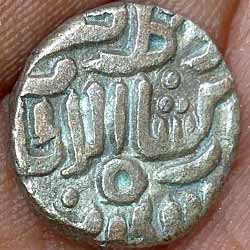 |
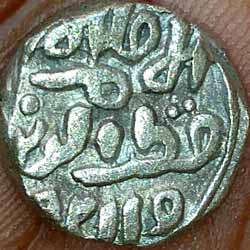 |
Mubarak Shah Metal: Billion Price 450 + Shipping 70 Contact WhatApp: 9150640650 |
2 Gani - Ala - al - din - Mohammed II |
 |
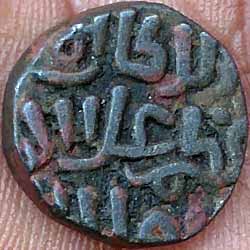 |
2 Gani - Ala - al - din - Mohammed II Metal: Bullion Price: 450 + Shipping 70 Contact WhatApp: 9150640650 |
1 Jital - Jalal al Din - Firuz |
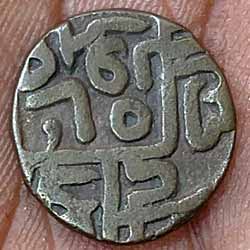 |
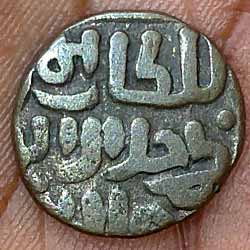 |
1 Jital - Jalal al Din - Firuz Metal: Billion Price: 450 + Shipping 70 Contact WhatApp: 9150640650 |
1 Jital - Qutb - ud - Din - Mubarak Shah |
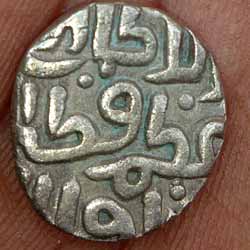 |
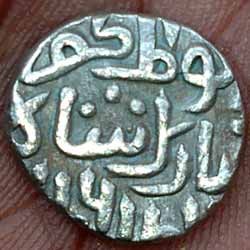 |
Qutb - ud - Din - Mubarak Shah Metal: Billion Price: 550 + Shipping 70 Contact WhatApp: 9150640650 |
| Mamluk or Slave Dynasty |
| Lodi Dynasty |
| Tughlaq Dynasty |
| Suri Empire |
Quick Enquiry
*** For Buying and selling quires you can contact us to this Mail Id: gkarthikeyan2k@yahoo.com ********* Contact Us